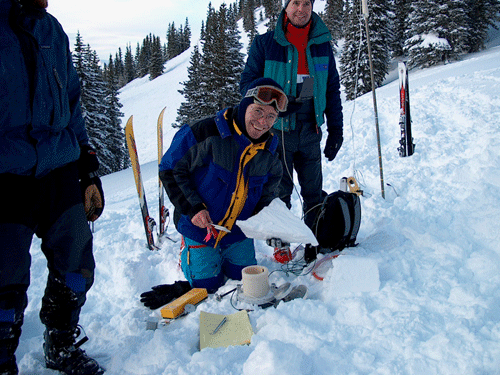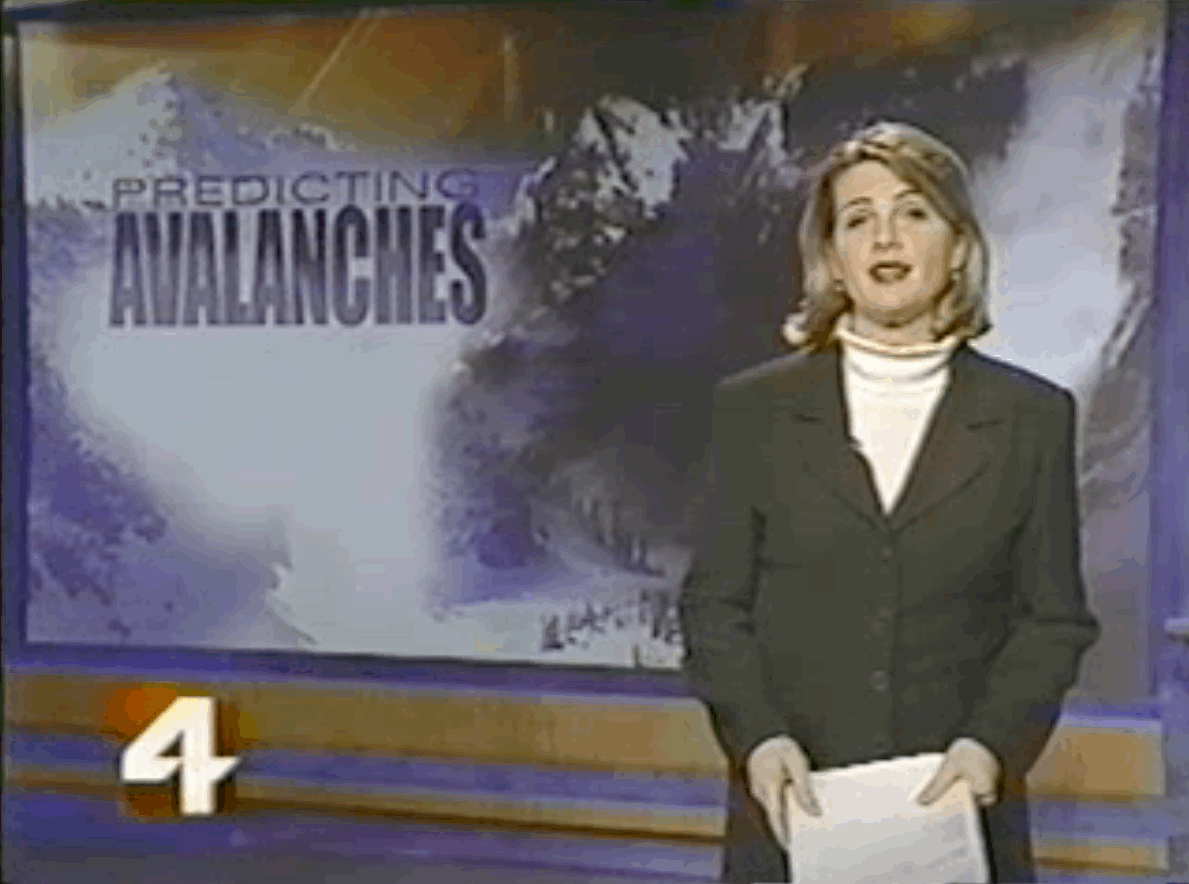Snow Research in the Sibley School
We have deployed capacitance instruments to measure the density and velocity of snow in collaboration with Rand Decker, the Center for Snow Science at Alta, Capacitec Inc, the University of Montana, and the Swiss Federal Institute for Snow and Avalanche Research in Davos (SLF). The work led to the development of a probe for rapidly charting the stratigraphy of snow packs. It is also used by the SFL at their Vallée de a Sionne avalanche facility.
More recently, we contributed to the mechanics of powder snow avalanches, see our page on "eruption currents".
Results
Our main publications on this subject include:
Betty Sovilla, Jim N. McElwaine, and Michel Y. Louge (2015) The structure of powder snow avalanches (Structure des avalanches en aerosol), Compte-Rendus de Physique 16, 97-104, http://dx.doi.org/10.1016/j.crhy.2014.11.005.
Powder snow avalanches (PSAs) can be hundreds of metres high and descend at astonishing speeds. This review paints a composite picture of PSAs from data acquired at the Vallee de la Sionne test site in Switzerland, including time-histories of snow cover thickness from buried radar and, at several elevations on a pylon, impact pressures from load cells, air pressure, particle velocity from optical sensors, and cloud density and particle cluster size from capacitance probes. PSAs feature distinct flow regions with stratification in mean density. At the head, highly fluctuating impact pressures weaken with elevation, while vertical velocity profiles evolve rapidly along the flow, suggesting that surface snow layers of light, cold, cohesionless snow erupt into a turbulent, inhomogeneous, recirculating frontal cloud region. For hundreds of metres behind the head, cloud stratification sharpens with the deposition of suspended cloud particles, while a denser basal flow of increasing thickness forms as deeper, warmer and heavier parts of the weakened snow cover are entrained. Toward the tail, vertical velocity profiles are more uniform, impact pressures become lower and steadier as the flow becomes thinner, and snow pack entrainment is negligible.
Dent, J. D., Burrell, K. J., Schmidt, D. S., Louge, M. Y., Adams, E. E., and Jazbutis, T. G.: "Density, velocity and friction measurements in a dry-snow avalanche", Annals of Glaciology 26, 247-252 (1998).
This paper, presented by Jimmie Dent in Chamonix in May 1997, shows how we deployed the capacitance probe on the side of the Revolving Door avalanche corridor in Bridger Bowl, Montana, to carry out the first record of density in a flowing slab avalanche.
Louge M.Y., Steiner R., Keast S.C., Decker R., Dent J. and Schneebeli M.: “Application of Capacitance Instrumentation to the Measurement of Density and Velocity of Flowing Snow,” Cold Regions Science and Technology 25, 47-63 (1997).
This paper describes in greater detail how to apply capacitance
instruments to snow avalanches. It summarizes results obtained at
Cornell, at Alta (Utah), Davos (Switzerland) and Bridger Bowl (Montana).
An excerpt of Louge, et al (1997) is available here.
Zipped DXF files of our snow wand for velocity measurements in snow avalanches, are available here. They can be used to manufacture all parts of the wand.
Louge M.Y., Foster R.L., Jensen N. and Patterson R.: “A Portable Capacitance Snow Sounding Instrument,” Cold Regions Science and Technology 28, 73-81 (1998).
This paper describes how we rapidly charted the snow pack with a new
stratigraphic capacitance probe. We tested the instrument at Alta (Utah). The work was sponsored by
the Army Research Office through a Small Business Innovation (SBIR)
Grant. The final report
to ARO also contains information on how to implement an optical
measurement technique of snow density.
An excerpt of Louge, et al (1998) is available
here.
The short news report abobe illustrates the technique (report produced by Kim Miller of News 4 Utah broadcast on December 14, 2001 © News4Utah KTVX-TV ABC 2001 All Rights Reserved, reproduced courtesy of Chris Pelkie, Kim Miller, and Mitchell Loe.)
 Michel Louge (left) and
Bob Foster (right) record the dielectric
Michel Louge (left) and
Bob Foster (right) record the dielectricproperties of Alta snow, December 2001.
 Katharina Platzer and Michel Louge use the
capacitance instrument on the Davos Weissfluhjoch snow pack.
Katharina Platzer and Michel Louge use the
capacitance instrument on the Davos Weissfluhjoch snow pack.  Betty Sovilla uses the snow press at the
Weissfluhjoch SLF facility in Davos.
Betty Sovilla uses the snow press at the
Weissfluhjoch SLF facility in Davos. Further information
Download here a source code for calculating the optical penetration of light through snow. This may be used to interpret signals from the optoelectronic system used by Dent, et al (1998) for snow density. More information on optical devices for snow may be found in our final report to the ARO.


 Sensors Magazine's cover page of March 2002
featured this project.
Sensors Magazine's cover page of March 2002
featured this project.